CoinEx Research | Avalanche Chain Hermit Crab
In 2021, whether it is the success of Axie or the renaming of Facebook to Meta, the metaverse and GameFi sectors of the entire blockchain have been detonated, and the token prices of related concepts have risen several times in the next few days. The rich effect also brings more developers and capital into the upsurge of on-chain games.
Followed by imitators and followers on various public chains, BSC and Solana are the two main chains. With the natural advantages of low transaction fees and high transaction speed, coupled with the traffic support of Binance Exchange, BSC chose to deploy most of the early popular chain games on its network. Although its quality varies, it also satisfies the enthusiasm of blockchain users to explore the new type of chain game.
On Solana, another GameFi base, although the games have not yet been released, from the official information that has been released, most of the games are well-designed and large-scale productions, in stark contrast to the shoddy quality on BSC. Relevant players and communities are very active. Many NFT game assets were snapped up as soon as they went online, and the secondary market was hyped to more than 10 times the price.
In contrast, the public chain Avalanche, which has gradually risen this year, seems to be in decline, and there are almost no well-known chain game projects. When BSC and Solana gradually become the red sea of competition, Avalanche, which also has the characteristics of high performance and low cost, may become the base for the next outbreak of chain games. Among them, Crabada is a popular and profitable chain game on the Avalanche network. With its special Loot mode, it attracts many players to participate, and it may be the first shot of Avalanche's online game outbreak.
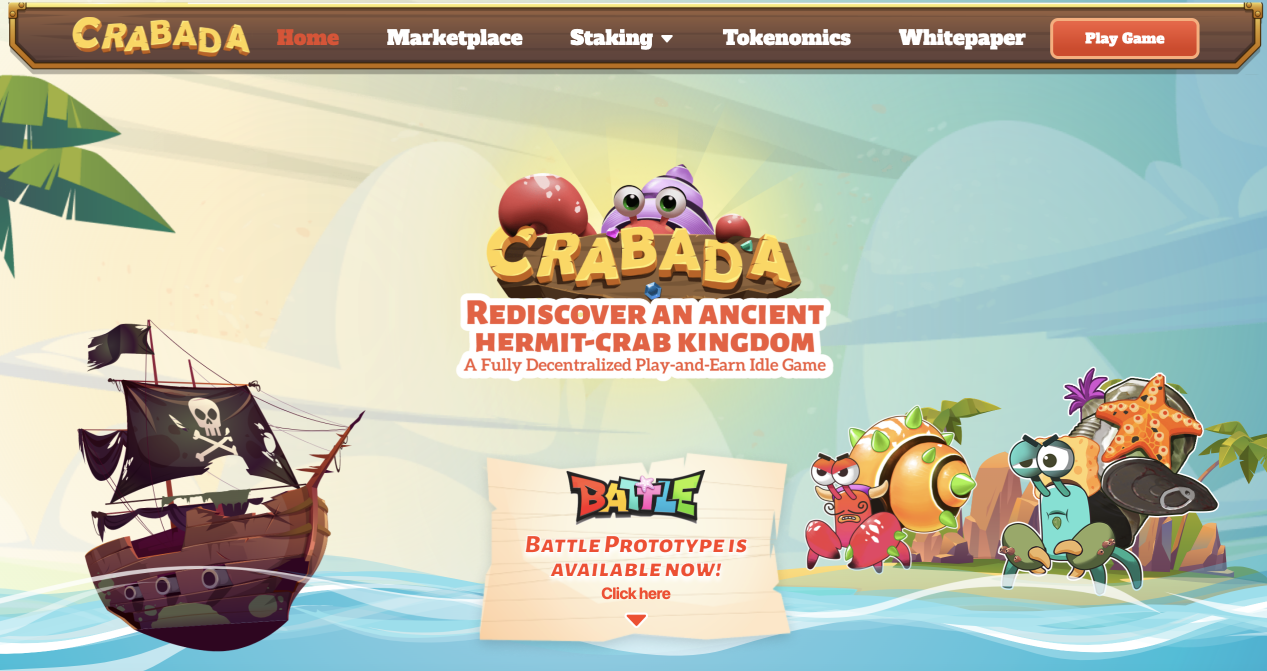
Hermit crab-themed NFT battle P2E chain game
Crabada is a hermit crab-themed NFT battle game based on the Avalanche chain. The background of the game is the underwater world. Hermit crabs, the NFTs that act as combat units in the game, are called Crabadas.
Similar to other traditional games and chain games, Crabadas have different attributes and characteristics, and can be customized and multiplied. From the design mechanism of NFT, each Crabada has basic attributes such as speed, attack and defense. Players form a team by combining different Crabadas reasonably, and finally produce different team effects.
As a chain game, Crabada game also has the characteristics of Play-to-Earn and is presented through the following game rules:
1. It takes 3 Crabada hermit crabs to form a team, which is the startup cost of the game;
2. The formed team can go to the seabed mine for mining and gain profits. This part is to obtain rewards from system tasks and rules through PVE mode;
3. The formed team can snatch the minerals being mined by other players to obtain snatch profits. This part is part of the PVE benefits of others after winning the battle in the PVP mode;
4. Players can also rent or sell their spare Crabadas to other teams for profit. This part is the proceeds from leasing/selling NFTs.

Each player can start with up to three teams, and each team can be used for one match. Players can get Crabada Amulet-CRAM by staking CRA to increase the number of teams or participate in lucky draws.
Using CRAM can help players add up to 3 more ownable teams. CRAMs can also be used as tickets for sweepstakes, with 3 Genesis and 7 Pure Crabada being drawn from the weekly prize pool.
Dual Token Mode under Play-to-Earn Mechanism: CRA/TUS
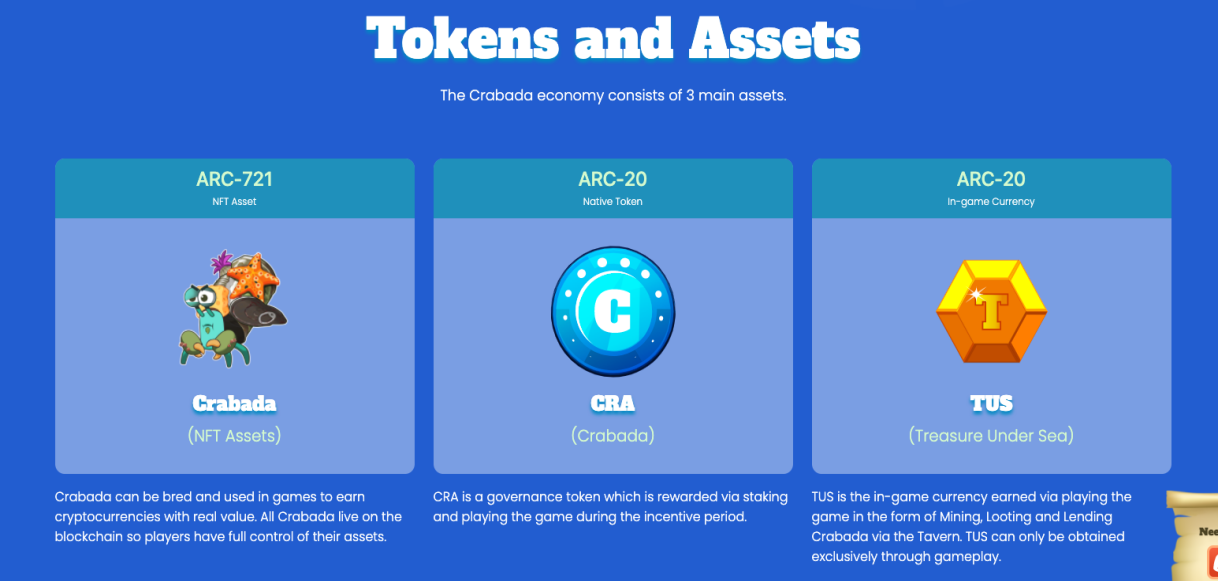
In terms of the design of the token economy, Crabada has not made great innovations. The game adopts the dual-token model that has proven to be relatively stable: governance token (CRA) + in-game token (TUS). CRA is an in-game governance token that can be acquired through staking, in-game mining (PVE) or snatch (PVP) modes. TUS is an in-game token that can only be obtained by in-game Mining, Looting or renting Crabada in Tavern. Similar to Axie's SLP, TUS is a token with an inflation mechanism, and its total supply will be controlled through buybacks and burns.
Crabada is created based on Avalanche Chain. The main circulation of tokens CRA and TUS are on DEXs on Avalanche Chain such as Trader Joe, or users can also buy and sell on centralized exchanges such as CoinEx.
https://www.coinex.com/exchange/CRA-USDT
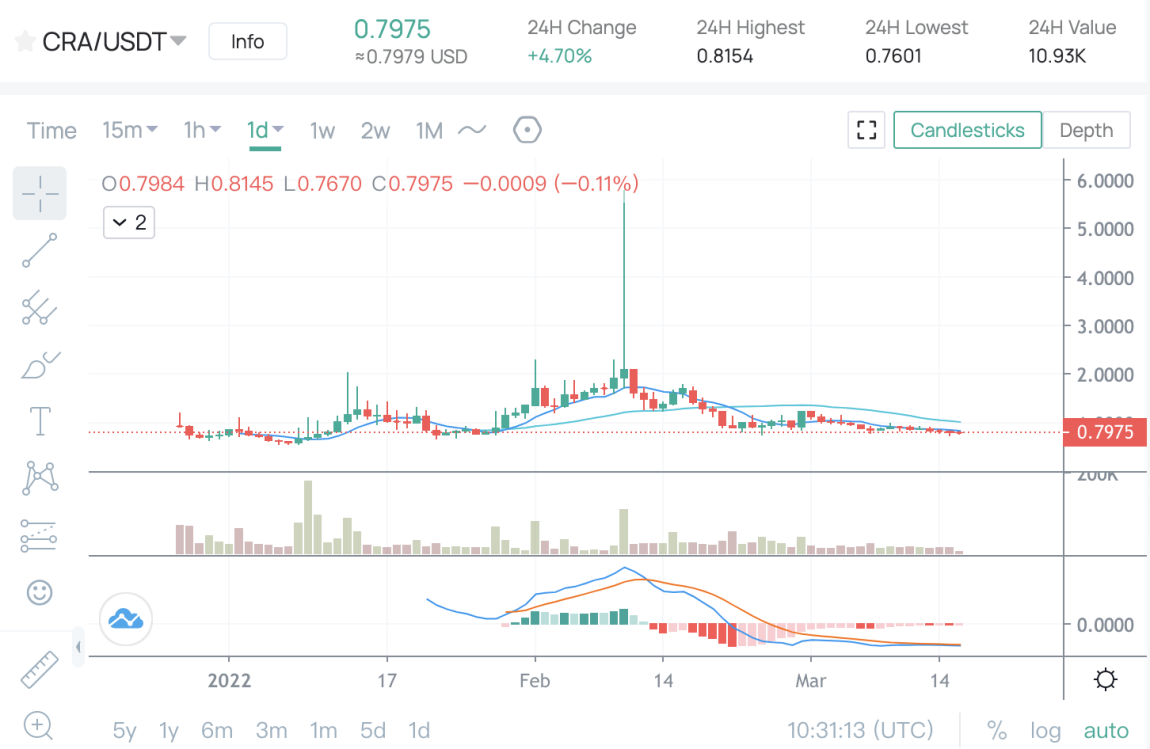
PVE mode: team up with hermit crabs to mine seabed minerals to gain profits
The first way to play Crabada is PVE mode. Players gather 3 hermit crabs to form a team to mine minerals. The whole mining process will last for 4 hours. Afterwards, players will receive 3.75CRA and 303.75TUS rewards (if there is a snatch, the player's income will be changed based on the result of the snatch).
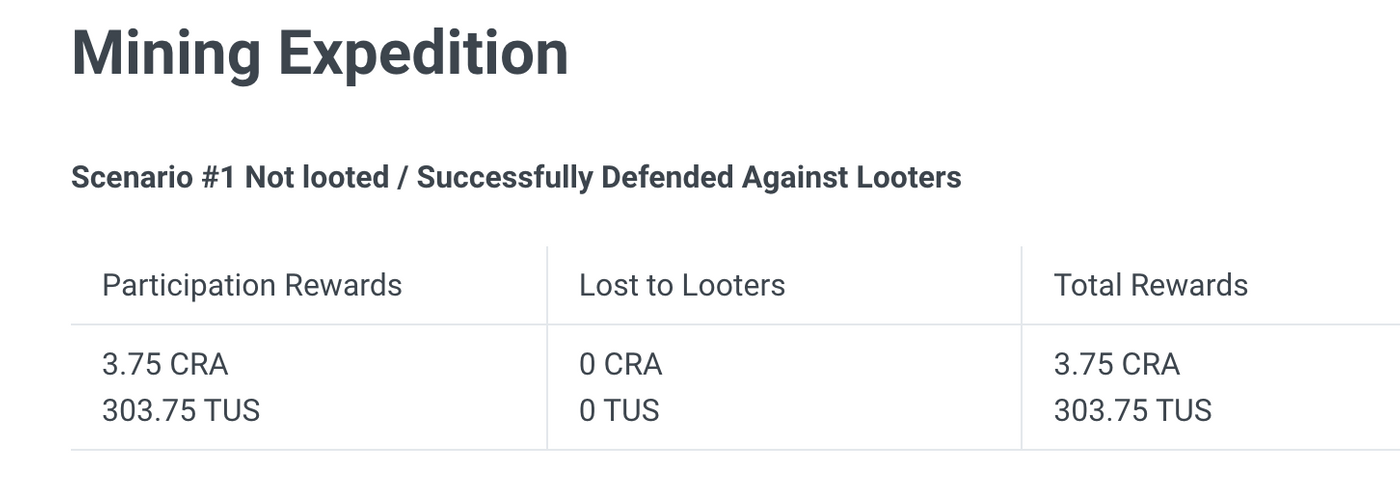
For heavy krypton gold players, they can mine up to 6 times a day (4 hours/time). Assuming that an ordinary player can mine 3 times a day, their expected return value is shown in the figure below. Simply calculate, the maximum reward a player can get in one day (mining 6 times/day) is 22.5CRA+1822.5TUS.
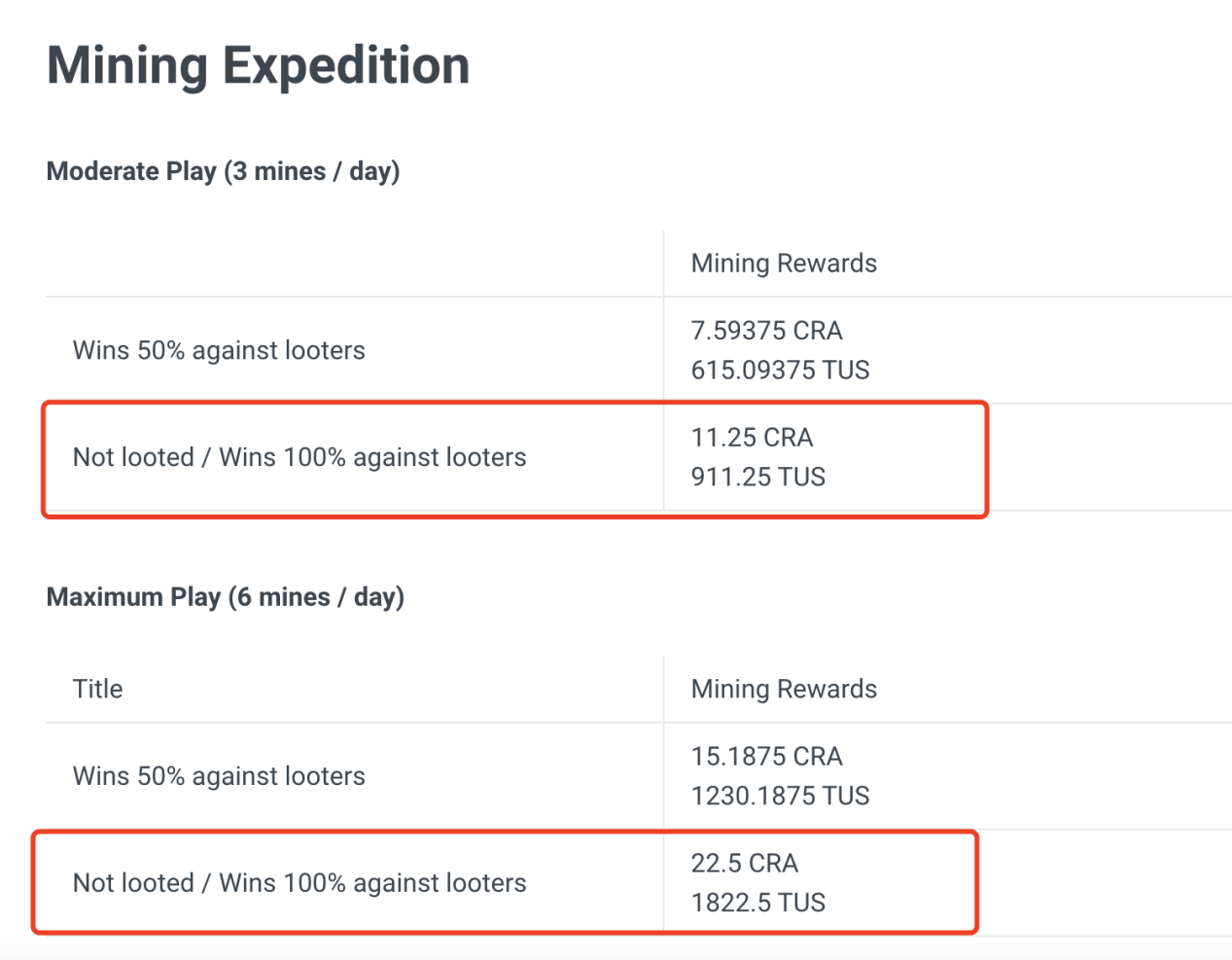
PVP snatch mode: team up with hermit crabs to snatch other people's mines and compete with other players
Compared with other chain games, a special innovative mechanism of Crabada game is that it can snatch other players' mines, which increases the playability and interest of the game. Players can form a team to snatch the minerals that other players are mining. By intervening and influencing the PVE mode of others, more options and strategies for earning income are added to players. And the loot mode takes less time to complete than the 4 hours of mining PVE mode. Corresponding to the plundering mechanism is the reinforcement system. The duration of the plundering mission is 1-3 hours. The plundered players can use reinforcements within the specified time to protect their minerals and drive away the enemy.
For a Krypton player, since the strength of his team is generally higher than that of ordinary players, the benefits obtained from participating in the plundering mode will be far more than the ordinary mining PVE mode, which further gives the Krypton player the motivation of Krypton. Increased demand for game consumption tokens (CRA and TUS).
According to the design of the game, players can theoretically complete a maximum of 24 looting missions a day (1 hour/time), but considering that there are other players defending and confronting the situation, it will actually take more than 1 hour to complete a looting mission, the official white paper The number of players snatching is 16 times a day, which is more in line with the actual situation. At the same time, the player's income under the conditions of 50% and 100% snatch success rate is also listed in detail as shown in the figure below.
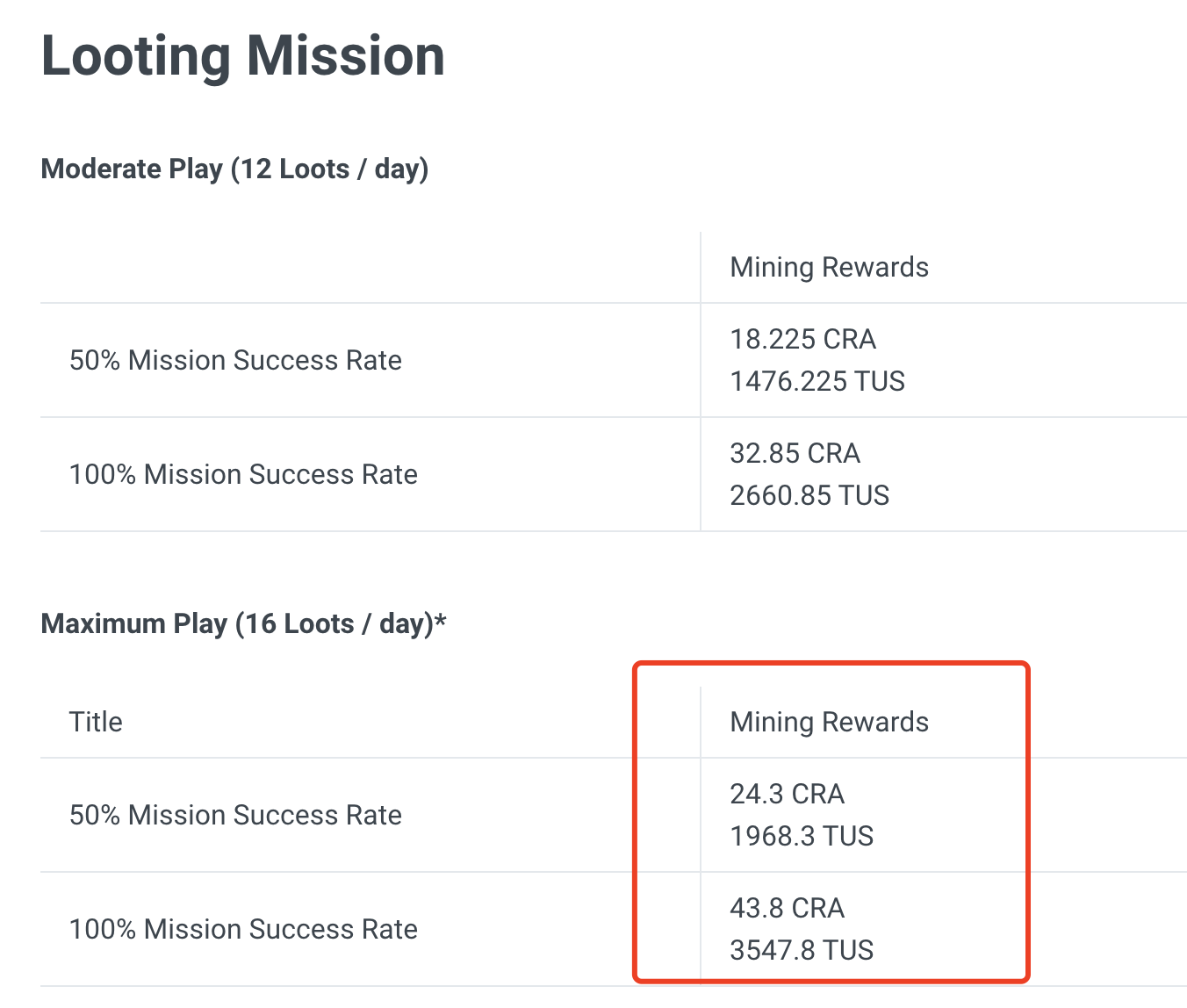
It can be seen that if 16 looting tasks are completed every day, the maximum income obtained is 43.8CRA+3547.8TUS, which is almost double the reward for participating in ordinary mining PVE mode tasks, so from the perspective of the game reward mechanism, the developer is Encourage players to snatch each other.
Crabada Launches Subnet Swimmer Network
On March 1 this year, Crabada launched its own Avalanche-based gaming-focused subnet, Swimmer Network, with transaction speeds about 10 times that of the Avalanche C-chain. TUS will consume tokens as the gas fee for the subnet. In addition, the project developed in Swimmer Network can bear the gas fee and allow players to experience the game with zero gas fee. Crabada will provide 1.25 million CRA tokens as development support for the new project. At present, Swimmer Network has been launched on the test network. The release of the subnet will further optimize Crabada's game experience and game speed, and at the same time bind players more deeply in the game's ecology.
Summarize:
Three hermit crab NFTs team up to complete the task. This game mode makes players think of Axie for the first time. It is undeniable that when designing Crabada, the team may have learned from Axie's combat mechanism. But unlike Axie, Crabada has designed a snatch mode that allows players to intervene in other players' PVE activities to obtain higher returns than PVE. This combination of PVP and PVE increases the strategic depth of the game, increases the fun of the game level, and enriches the team's collocation. In terms of game mechanism design, it can be said that it is an innovation based on Axie.
At the same time, judging from the current ecological projects of the entire Avalanche chain, the current projects on the Avalanche chain are still dominated by DeFi. Avalanche Chain urgently needs chain game products like Crabada to enrich its ecological diversity. If Crabada can maintain its popularity, players’ enthusiasm for the game will generate demand for CRA and TUS tokens, and it will further increase the utilization rate of Avalanche Chain and expand the depth of its users, which is very valuable for the entire ecosystem. of. In addition, the stablecoin issuing company Tether announced in October 2021 that it will issue additional USDT on the Avalanche Chain. It can be seen that the Avalanche Chain, which focuses on high speed and low transaction fees, is gradually being valued by the market.
Games are very important to the cultivation of user habits. As the first product on the Avalanche chain with explosive potential, Crabada launched its GameFi first shot and has also received strong support from AVAX officials. With Crabada as the fulcrum, and with the support of USDT's leading TradeFi token, it is worth looking forward to whether the chain game in the avalanche ecosystem will break out.
Like my work? Don't forget to support and clap, let me know that you are with me on the road of creation. Keep this enthusiasm together!

- Author
- More